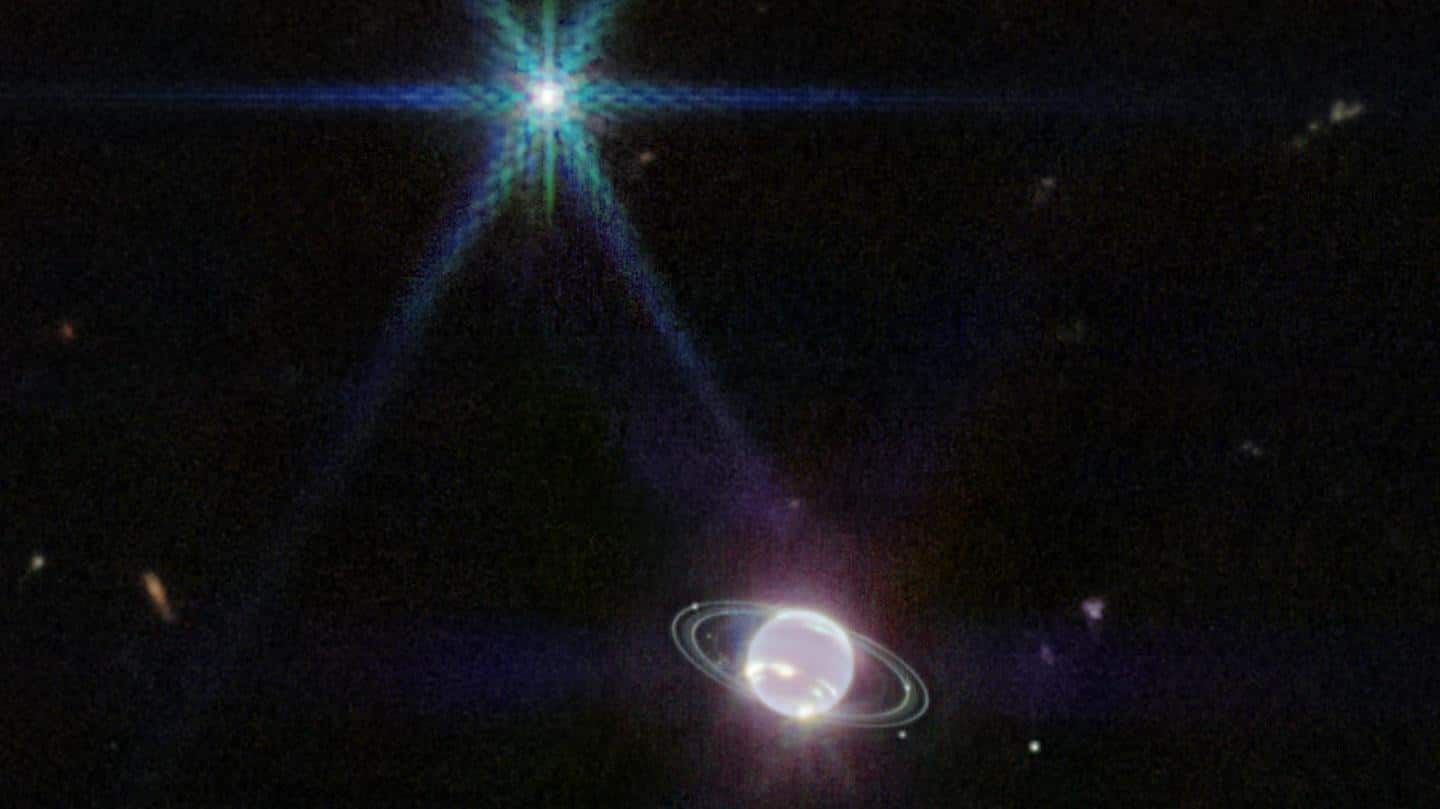
James Webb captures clearest picture of Neptune in decades
What's the story
Wherever the James Webb Space Telescope's (JWST) gaze lands, it unlocks something new. This time, the telescope turned its eyes toward Neptune. The result is the clearest image of the icy planet's rings in decades. The last time we had such a clear view of the 'last planet standing' in our solar system was in 1989, courtesy of NASA's Voyager 2.
Context
Why does this story matter?
Neptune has always been an intriguing story. It is so far away from the Sun that high noon on Neptune would look like dim twilight on Earth. We have not been able to understand Neptune fully due to our technological limitations. If the image captured by JWST is any indication, that has changed now. The future is certainly bright for new discoveries.
Image
The image shows Neptune's faint, dusty rings
In the image captured by the Webb, we see a never-seen-before luminous Neptune and its rings. The telescope's new image shows the ice giant's fainter dusty rings along with the more bright, narrow ones. It has been over three decades since we last saw the faint rings. In the picture, Neptune appears as grayish white, with icy clouds streaking its surface.
Infrared
Why is Neptune not blue in Webb's image?
We all have seen Neptune in its classic blue color captured by the Hubble. The bluish shade is due to the presence of methane. With JWST's Near-Infrared Camera (NIRCam), however, the planet doesn't appear blue. The methane gas strongly absorbs red and infrared light, making the planet dark in infrared wavelengths, except where methane-ice clouds are present. They appear as bright streaks and spots.
Pole
JWST managed to get a glimpse of Neptune's north pole
Webb's image of Neptune shows a thin and faint line of brightness circling the planet's equator. This indicates the presence of global atmospheric circulation that's driving Neptune's winds and storms. In the image, we can also see an "intriguing brightness" at the planet's northern pole. We have never had a good look at Neptune's north pole before as it is tilted away from Earth.
Moons
Triton, a Neptunian moon, is the 'highlight' of the image
Besides Neptune, the Webb has also provided us with a look at seven of its 14 moons. The portrait showcasing Neptune is dominated by a bright light above the planet. This unusual light represents Neptune's moon called Triton. It is coated by a frozen layer of condensed nitrogen. Triton appears really bright because it reflects 70% of the sunlight that falls on it.
Official words
James Webb's discoveries still catch people by surprise
It is true that the JWST was created to unlock an unprecedented amount of data about our universe. "Of course, we knew that it would do this, we built it to do this, it is exactly the machine we designed. But to suddenly start seeing things in these longer wavelengths, which were impossible before...it's just absolutely remarkable," said Mark McCaughrean of European Space Agency.